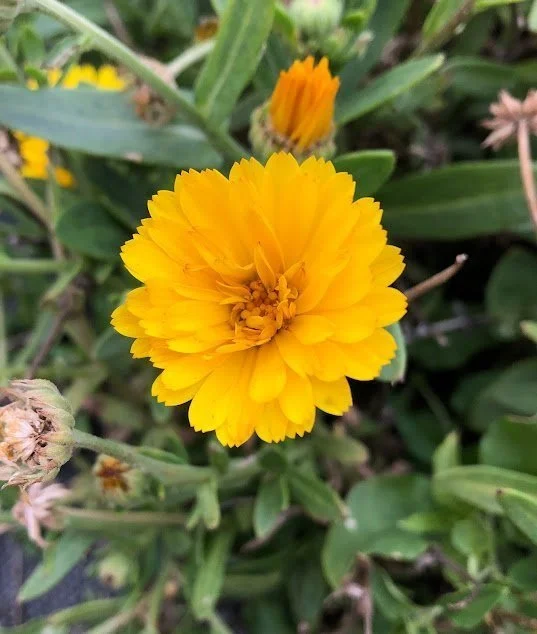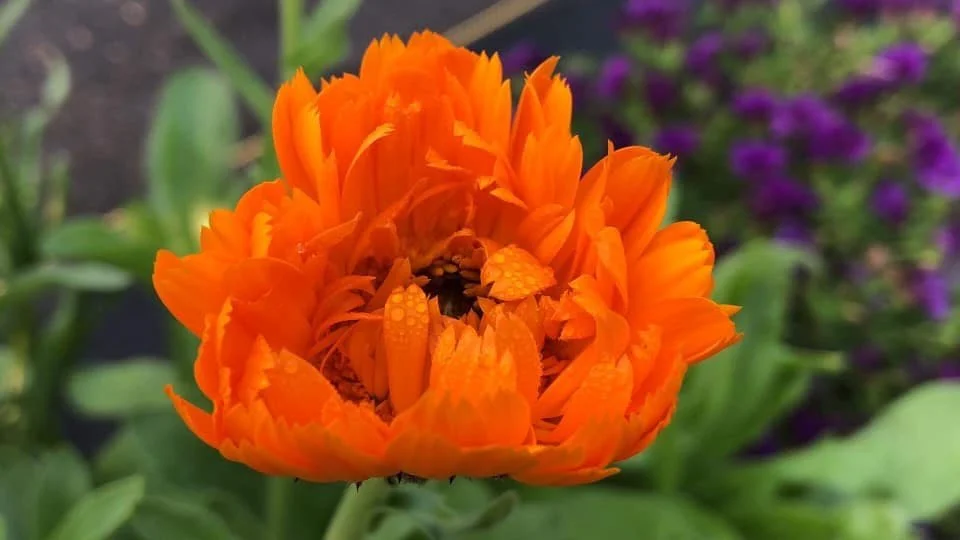Calendula
A bright-yellow calendula in full bloom. Image captured by one of our master gardeners
Plant of the Week: April 11, 2022
Calendula officinalis
By Julie Gustafson, Anoka County Master Gardener
Calendula, or Calendula officinalis, is a plant from the Asteraceae (daisy) family. It is a beautiful, medicinal, and edible plant. Sometimes referred to as pot marigolds, these hardy plants grow well in containers and garden beds. Calendula is also known as the poor man’s saffron. As one of the oldest varieties of cultivated flowers, it is easy to grow from seed and grows well in cooler climates. It has bright and cheerful blooms and many uses in and out of the garden.
Calendula is one of the oldest varieties of cultivated flowers, with over one hundred varieties. These hardy annuals are easy to grow from seed and offer a cheerful pop of color in Zones 3-10. Plant sizes vary from 12 to 15 inches. The yellow and orange flowers are one to three inches across. Plant calendula seed indoors four to six weeks before the average last frost date. They transplant well into the ground or containers in full to part-sun. Calendula adapts well to many soil conditions and blooms from early spring to late fall. It even tolerates a light frost.
The leaves and flowers are edible. Use fresh blooms in salads or as garnishes. Add them to soups and stews for flavor and color. When dried, the petals resemble the look of saffron and may be used as a substitute. Infuse olive oil with dried flowers and use it as an ingredient for salad dressings.
Generations of gardeners have used calendula flowers for their medicinal properties. Use the dried flowers to make teas, oils, and salves. Calendula is antiviral, antibacterial, and anti-inflammatory. It is an excellent addition to medicinal teas and a common ingredient in skincare products. Its gentle and hypoallergenic healing properties are helpful for many skin ailments.
Calendula will add beauty and function to any garden with little to no fuss. Its cheerful color outdoors and practical uses indoors demand its place in the garden year after year.
IMAGE CAPTURED BY ONE OF OUR MASTER GARDENERS
Citations:
Degman, M. (2020, September 3). The history of Edible Flowers. Garden Guides. Retrieved March 20, 2022, from https://www.gardenguides.com/85738-history-edible-flowers.html
Garden Answer. (2019, November 23). 9 reasons you should grow calendula! 🌼😍// garden answer. YouTube. Retrieved March 20, 2022, from https://www.youtube.com/watch?v=W3o4bN2Jm7c


